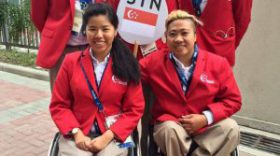
Recently a number of young Singaporeans rose to prominence on the world stage:
- Joseph Schooling with his Olympic gold medal
- Yap Xiu Pin’s additions to her Paralympic gold medal tally
- Nathan Hartono with his second placing in a very competitive singing competition in China
- Seetoh Sheng who is best known for his design of the dinosaur pouch that our First Lady brought along on her White House visit
- Kenneth Sng who made the opening remarks ahead of the 2nd US presidential election debate.
They couldn’t be more different. And yet…what do they all have in common?
What can we learn from their paths to success?
Maximise your child’s potential in 7 steps:
- Be aware of each child’s unique interests.
The Abridged Multiple Intelligence Developmental Assessment Scales (“Abridged MIDAS”) is a great tool to help you get started on better understanding your child’s natural preferences. Strengths usually are built upon these natural preferences.
- Understand that there is “no one size” fits all solution to imparting knowledge.
The summary that comes along with your Abridged MIDAS results provides a useful framework to think about the different ways that information can be presented. Notably, it fleshes out how some of our tastes and interests can influence how we take in information.
- Do not label your child.
It is important to avoid taking the MIDAS results to label people as naturalist learners, musical learners, logical learners and so on. Labeling creates limits, and when it comes to learning, you wouldn’t want to be unknowingly restricting your child’s potential.
- Refine your own understanding of Multiple Intelligence
The complimentary MIDAS Abridged Assessment provides a quick start on helping you measure your child’s interests rather than ability. Its results show up in terms of the main 8 Smarts. But do know that the full version of MIDAS Assessment will be able to further break down each Smart into sub-scales. For example, an actor, athlete and surgeon would all need to have a reasonably good degree of Body Smarts, but this is represented in different Body Smart sub-scales.
The full version of MIDAS is now available for sale at a 30% discount here (UP: $50).
- Design learning activities which play to your child’s learning styles.
There are different contexts in which your child can enhance his/ her learning and engaging a variety of their senses could help — for example, learning about fractions through musical notes, flower petals, and poetic meter. Do subscribe to the Flying Cape Multiple Intelligence mailing list to benefit from our Multiple Intelligence Flash Tips.
- Choose enrichment classes based on your child’s Multiple Intelligence profile
You can also try out recommended classes using our All-You-Can Learn Class buffet package. We aim to narrow the gap for you through our personalised recommendations but you are the best judge. Your feedback improves the algorithm for future recommendation.
- Help your child be a “T” person.
Let your little one try out a wide range of activities for exposure (the horizontal part of the “T”), and then also go deep into a particular area of expertise (the vertical part of the “T”). The exposure helps your child to try out a broad spectrum of activities. This helps your child develop interest in a wider range of activities and aids in learning agility. The specialization provides the opportunity your child to excel in his/ her chosen field.







